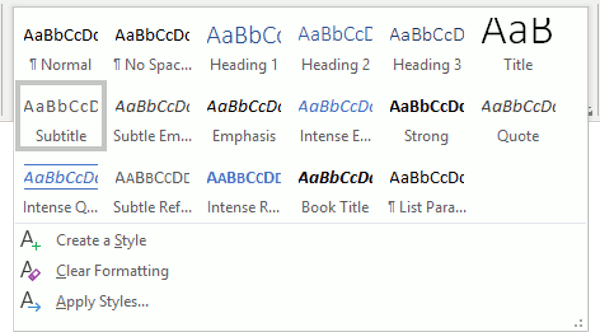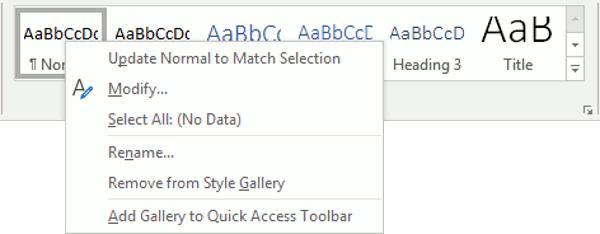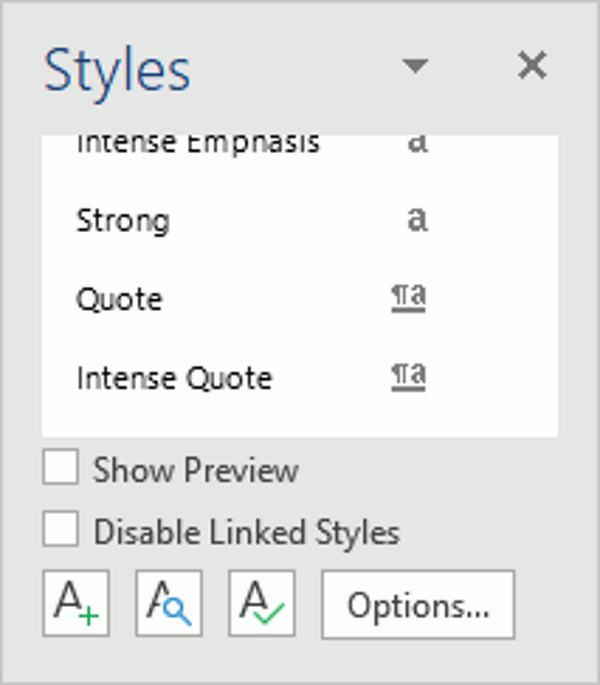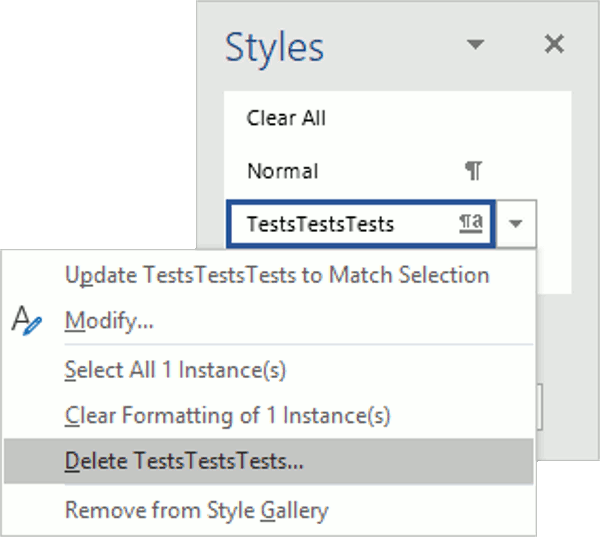www.TestsTestsTests.com
Styles in Word Tutorial – Word 2016 Styles
Creating, Modifying & Applying Styles in Word
Microsoft Word 2016 Tutorial with 4 quick VIDEOS
Free Online Microsoft Word Tutorial
- Why Use Styles in Word
- How to Apply Styles in Word
- Creating Styles in Word
- Modifying Styles in Word
- Deleting Styles in Word
- The Role of Styles in Word Template Design
TEST your MS Word skills with the corresponding FREE Online Multiple Choice
Styles in Word 2016 TEST
Styles in Word
Styles in Microsoft Word are an all to often ignored feature, and yet using them effectively can prove incredibly powerful in maintaining consistency both within and between documents.
Formatting a document to look consistent and professional requires some planning. Styles can be built-in, modified or created from scratch. Create and use your own styles to ensure all documents you send out is branded the same.
- Why Use Styles in Word 2016
As mentioned, when properly used, styles ensure a consistent appearance throughout a given document. More than this, when used in conjunction with MS Word’s template features, styles can ensure this consistency is preserved in other documents you produce or across your organization. Additionally, other Word features, such as automatic table of contents, function better when styles have been used properly.
At its core though, the benefit of using styles is in the ability to separate the act of content creation from the act of content formatting. By assigning styles during the act of content creation, you are then able to change the formatting of that content by changing only the styles. If it isn’t immediately clear to you why this is valuable, imagine the document you are working on is a 300-page book with different formatting for headings, subheadings, paragraphs, and captions. Imagine that you are tasked with changing the fonts, sizes and effects for these. In a document where these things were not assigned styles, you would have no choice other than to scroll through each page and apply the new formatting manually each time you encountered one.
Now, for the sake of argument, imagine the boss or supervisor you are doing this for is indecisive enough that you have to do this repeatedly…
…that’s why you should use styles.
- How to Apply Styles in Word 2016
Quick video introduction to using Styles in Word
Word comes with a few pre-defined styles. In fact, if you do nothing, your text will have the “Normal” style applied to it. You can use these built-in styles, safe in the knowledge that you can adjust these with a few clicks at any future time.

In order to use a style, simply select it from the Styles Gallery and start typing. You can set existing text to a style by first highlighting the text and then selecting the style.
Note that some styles are applied to the entire paragraph. If you attempt to apply paragraph styles to just one word within a paragraph it will update the entire paragraph. You will be able to identify them by the ¶ in front of their names.
- Creating Styles in Word 2016
Quick video introduction to Creating Styles in Word
In order to create your own style, first apply formatting to some text until you are satisfied with its appearance. Next, click the ‘More’ button (a horizontal line with a downward facing triangle beneath it), and select ‘Create a Style’ from the options.

This will bring up the ‘Create New Style from Formatting’ dialogue, where you can assign your style a name. Note that you can still modify the style further. In fact, if you skipped the first step and went directly to ‘Create a Style’, you can simply click ‘Modify’ and customize the formatting from there; either order is acceptable.

Clicking OK will create your style and add it to the Styles section.
- Modifying Styles in Word 2016
Quick video introduction to Modifying Styles in Word
Modifying a style is just as easy as creating them and, as with creating, there are two ways of doing it.

On one hand, you can first format text in your document and then, with this text selected, right-click the style you wish to update, and select ‘Update to Match Selection’ from the menu. This will change the style for future use and update all other instances of the style in the document.

Alternatively, begin by right-clicking the style and selecting ‘Modify’. This will open the ‘Modify Style’ dialogue.

Aside from the common controls on the ‘Modify Style’ dialogue, the Format menu on the bottom left gives access to various dialogues from which you can control just about every aspect of how the text will display or print.
- Deleting Styles in Word 2016
Quick video introduction to Deleting Styles in Word
From time to time you may feel the need to delete your custom styles.

If you right click the style in the Style Gallery, you get the option to ‘Remove from Style Gallery’; this option will remove the style from the gallery but does not delete it, and text with this style applied to it will continue to be styled as the removed style.

In order to fully delete the style, first click the styles button on the bottom right of the styles section.

This opens a dialogue listing all the styles known to the document, irrespective of whether or not they are visible in the Styles Gallery. By clicking to the right of any of these styles, you gain access to a menu which, among other things, will give you the option to revert or delete the style.

Any text still using this deleted style will either revert to the style it was based on or be assigned the Normal style. Note that it is only possible to delete custom styles. You cannot delete the built-in styles provided by Word.
- The Role of Styles in Word Template Design
While beyond the scope of this tutorial, the act of creating templates in Word draws from all other document creation skills you have acquired. Styles are especially helpful in cases where you want to be prescriptive for relatively free-form tasks.
One example would be a generic template for documents which need to include the company letterhead. You cannot know in advance for every document how many headings will be used, whether or not the author will include lists, whether there will be captioned images, etc. In this example, you could specify the formatting for all these things as styles, without a single line of text on the page, and still have a consistent appearance throughout all documents produced from the template.
See our article on free Word templates
Woohoo! Now that you have done the tutorial:
TEST your MS Word skills with the corresponding FREE Online Multiple Choice
Styles in Word 2016 TEST
* TRY THE NEXT TUTORIAL: Headers and Footers in Word Test 2016
* TRY THE NEXT TEST: Headers and Footers in Word Test 2016



